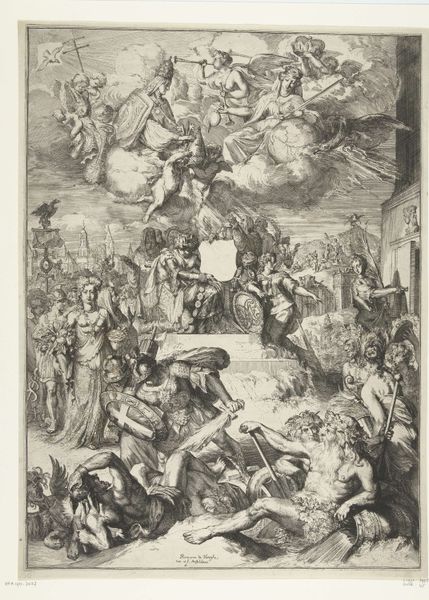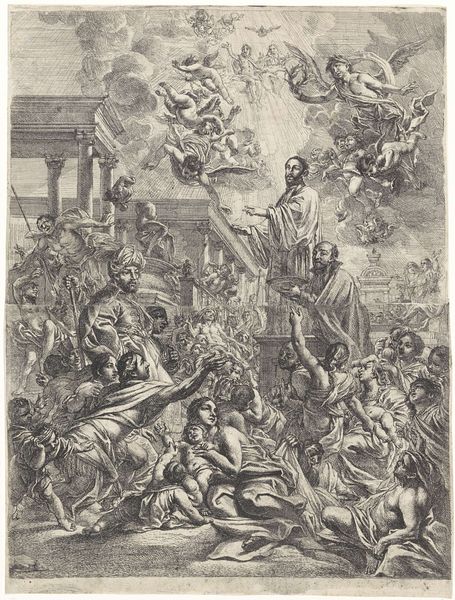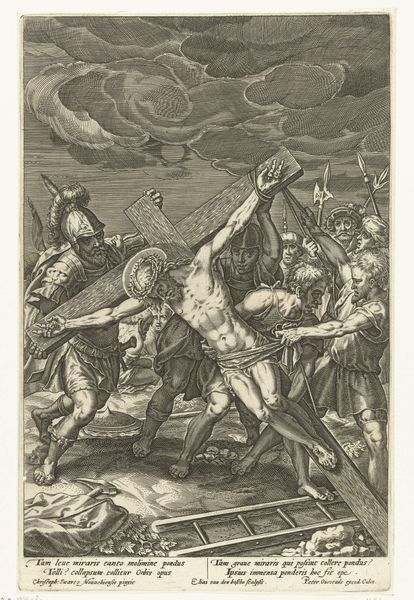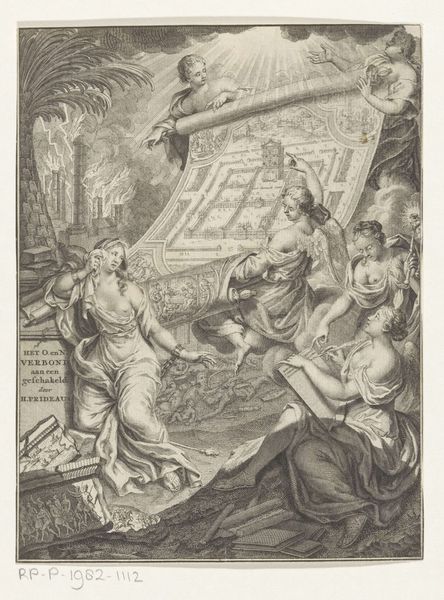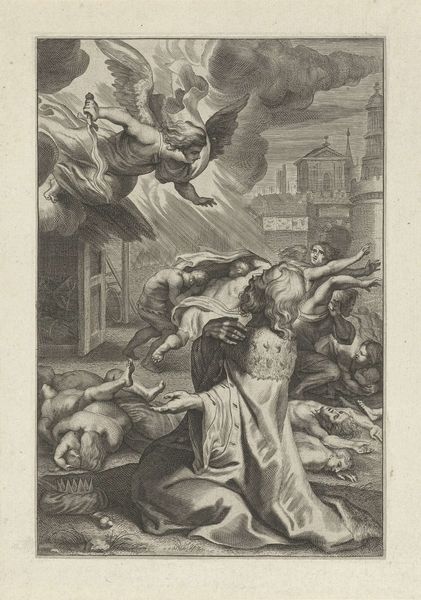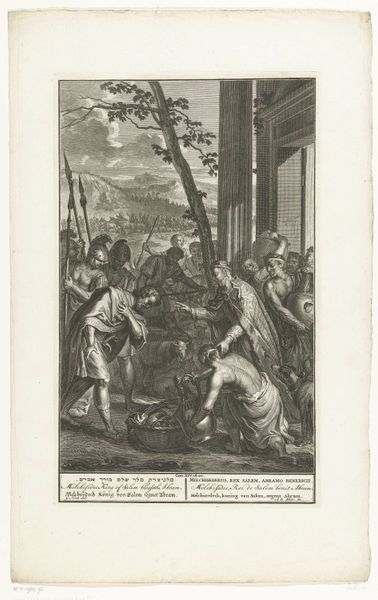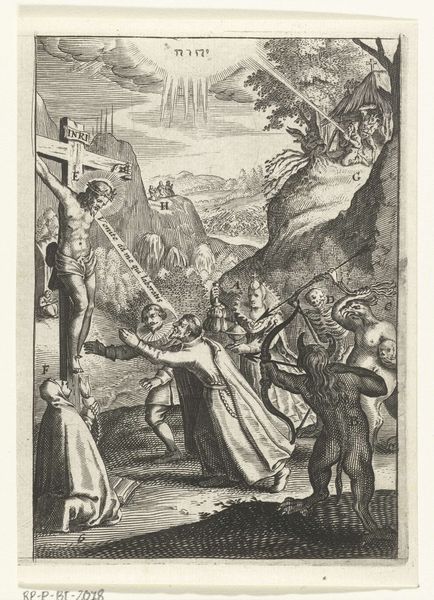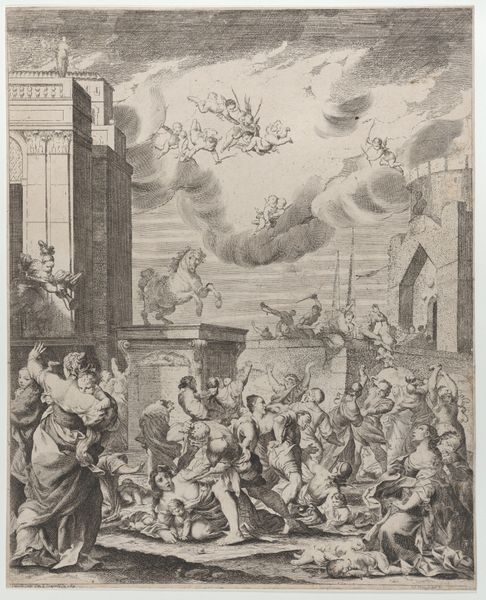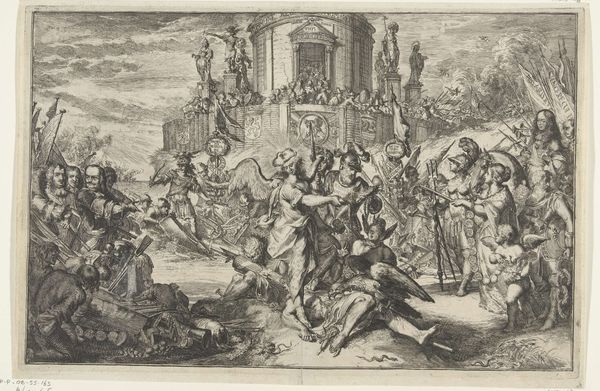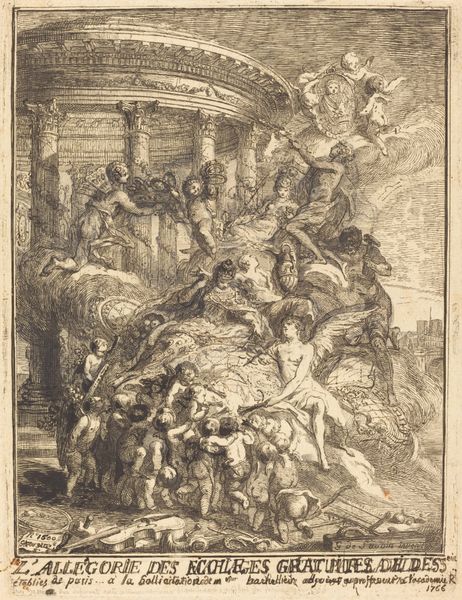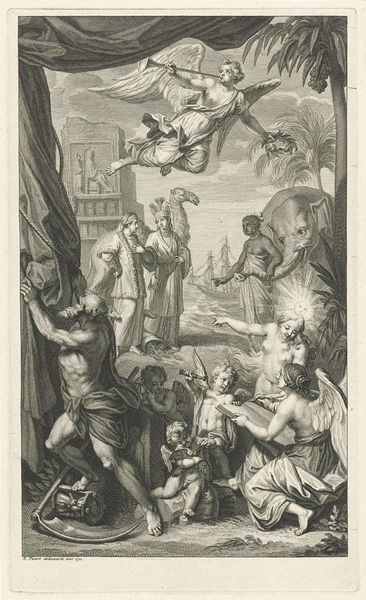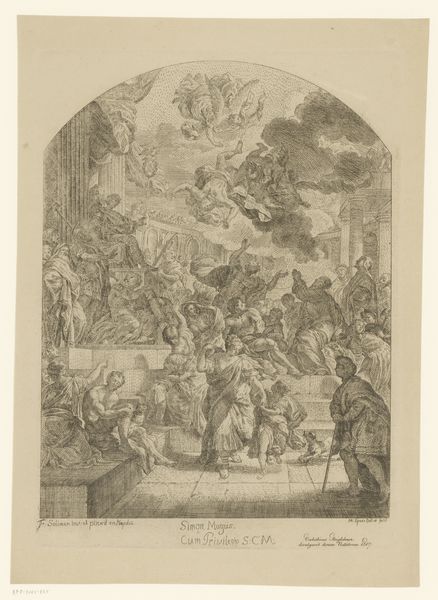
print, intaglio, pen, engraving
#
ink drawing
#
baroque
# print
#
pen illustration
#
pen sketch
#
intaglio
#
pencil sketch
#
figuration
#
line
#
pen
#
history-painting
#
engraving
Dimensions: height 582 mm, width 433 mm
Copyright: Rijks Museum: Open Domain
Editor: We’re looking at “Massacre of the Innocents” which is an engraving created sometime between 1668 and 1693 by an anonymous artist. It depicts a biblical scene with soldiers and terrified figures. The overall mood is quite disturbing. How do you approach a work like this from a historical perspective? Curator: It’s crucial to understand the socio-political context that informed both the subject matter and its visual representation. "Massacre of the Innocents," depicting Herod's order to kill all male children in Bethlehem, was a popular theme in Baroque art. It allowed artists to explore dramatic narratives and evoke strong emotional responses, and it spoke to the ever present violence that plagued Europe at the time. Editor: So, this imagery was somewhat commonplace? Curator: Commonplace maybe isn’t the right word. Perhaps, *politically charged*. Ask yourself, why this scene? Who commissioned it and for what purpose? Consider the print medium, meant for wider distribution. It takes history painting, generally seen as an aristocratic genre, and democratizes it through prints. How does making this so available influence the reception? Editor: I hadn't considered that. I was focused on the violence within the image. The way those figures are fighting, begging! Curator: Precisely. How does the artist’s choices amplify this? Look at the architectural backdrop contrasting with the chaos below, the spears pointing towards the heavens as mothers try desperately to shield their children. These aren't merely artistic choices, but reflections of a society grappling with power, faith, and morality, all playing out in a very public, visual sphere. Editor: That's a much broader view than I had originally. So the political climate of the day can play a big role in a work's imagery and distribution. I’ll have to think about these historical considerations when looking at art in the future. Curator: Absolutely. Analyzing art within its historical and social framework unveils deeper meaning, revealing its cultural relevance, as well as the power structures and beliefs of that time.
Comments
No comments
Be the first to comment and join the conversation on the ultimate creative platform.
